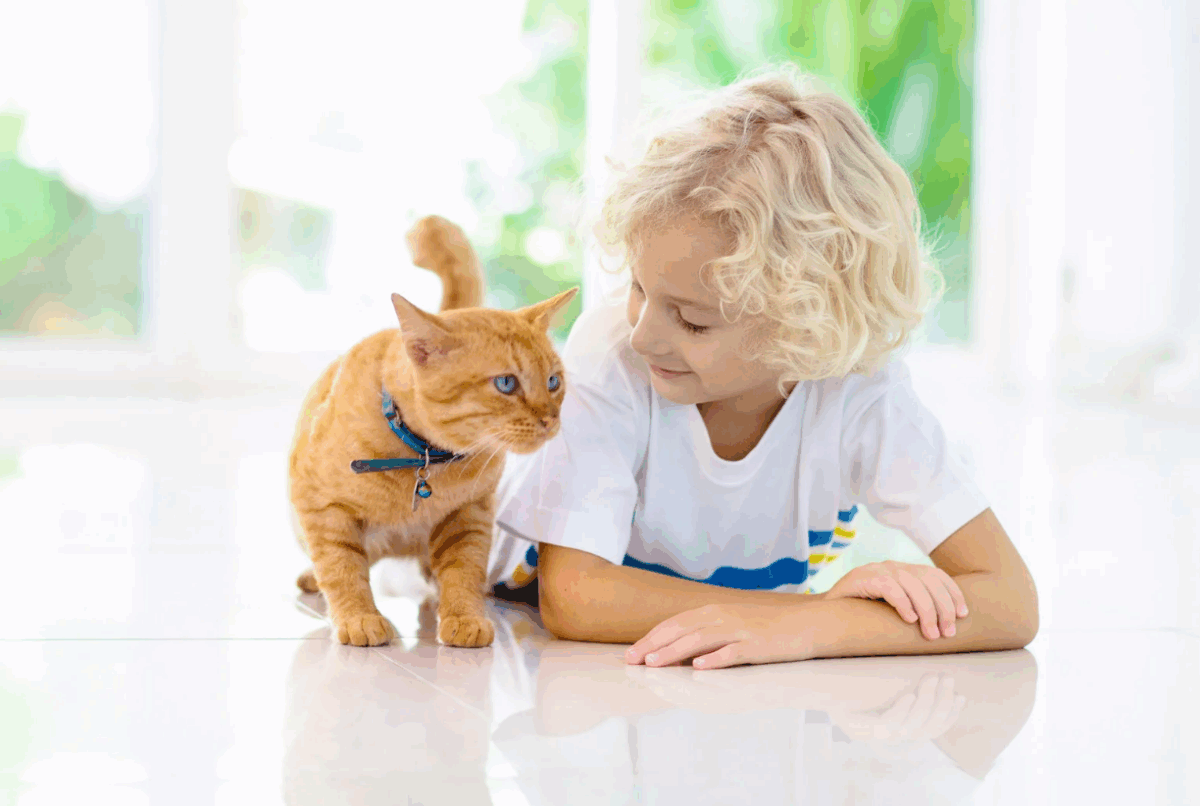Cats often become the first pets in households with young children. These animals are affectionate, social, and can be true companions for little ones. However, it’s important to remember that both children and cats have their own personalities and boundaries. To ensure a safe and happy relationship, parents need to teach their child how to treat a pet with care.
You can also show your child how to play safely with a cat—using appropriate toys for cats https://masterzoo.ua/ru/catalog/koti/grashki-dlya-kotv/myachiki-dlya-kotiv-i-kishok/, like balls, wands, or soft mice. These activities help build trust and make their bond more positive.
The earlier a child learns how to behave with a pet, the stronger the connection will be. Shared time can become a source of joy if approached with love and responsibility. In this post, let’s talk about establishing safe communication between a child and a cat.

Basic Rules for Interacting with a Cat
The first and most important rule is that a cat is not a toy, but a living being. A child must understand that animals have feelings, boundaries, and needs. They should not pull the tail, ears, or disturb the cat while it’s eating or sleeping.
It’s best to show the child how to pet a cat gently, where the cat enjoys it, and when it’s okay to approach. If the cat walks away, it’s not a reason to chase or get upset.
Parents should explain that the cat might be tired or simply not in the mood. It’s especially important not to leave the child alone with the cat during the early months. This allows adults to correct behavior and prevent conflict right away.
Key things to teach your child:
- Pet the cat only if it approaches first
- Don’t disturb the cat while it’s resting or eating
- Don’t grab or pull suddenly
- Always speak and move gently
Following these simple rules helps avoid scratches and bites. Most importantly, they teach empathy and respect. Over time, the child will learn to recognize when the cat wants attention and when it prefers to be left alone. This builds the foundation for a warm and trusting relationship.

Teaching a Child to Care for a Cat
Caring isn’t just about feeding—it’s also about attention, participation, and kindness. Start with simple tasks: let the child pour food or refill the water bowl. Explain why cleaning the litter box or brushing the cat is important.
Taking care of a pet together strengthens trust between child and animal. The key is to approach it positively and patiently. This helps the child feel both responsible and loved. Daily rituals—like filling the bowl each evening—create healthy habits. Eventually, the child will start helping independently and take pride in it.


Understanding Cat Body Language — and Teaching It to Children
Cats “speak” through body language and behavior. Their tail, ears, and eyes all send signals. If the tail swishes or the ears are pinned back, the cat is likely uncomfortable. Wide eyes, purring, and a soft gaze usually mean the cat is calm and content.
Parents can observe these cues with their child and learn together. This builds awareness and emotional sensitivity. Ask your child to describe what the cat is doing—it’s a fun and educational exercise. Turning it into a game makes learning even more engaging.
What cats may be saying:
- Tail flicking — irritation
- Ears pinned back — fear or anger
- Wagging tail and purring — happiness
- Hiding — wants to be alone
- Soft meowing — asking for attention
The better a child understands the cat’s language, the fewer conflicts there will be. This kind of interaction helps develop emotional intelligence and patience. It also teaches attentiveness—an essential skill in everyday life.

Safe Play: Choosing the Right Toys
To avoid scratches or bites, safe play is essential. Use proper toys: wands, small balls, or plush mice. A child should know that hands are not toys. Explain that teasing or grabbing the cat suddenly is not okay.
Instead, invent a gentle game where the cat feels in control and relaxed. These interactions build closeness and teach respectful play. Choose toys that both child and cat can enjoy together—it makes playtime more fun. The goal is to keep the game active but calm enough not to overstimulate the cat.

Spending time with a cat is a wonderful way to teach a child about care, attention, and respect. The key is to explain everything calmly and lovingly. A cat is not a toy, but a family member with real emotions and needs. Positive interaction helps a child grow into a kind and thoughtful person.
Parents play a central role—they set the tone for how a child bonds with the pet. Watch, guide, and be nearby. Then, the friendship between your child and cat will be real, strong, and lasting. This bond can bring joy for years and become a cherished memory for life.


